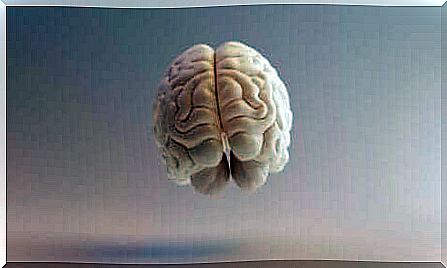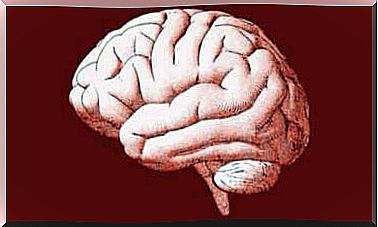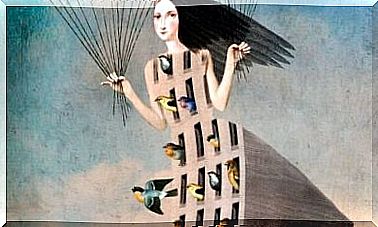Brain Ventricular System: Functions

The nervous system, our “conductor”, is made up of different but connected structures. Some are essential for proper functioning. This is the case of the ventricular system, a set of small communicating reservoirs; in short, something like a plumbing.
Inside the skull we find the encephalon and, inside it, the brain. The ventricular system, made up of four ventricles, is located right inside the brain. This structure is responsible for maintaining, protecting and providing structure to the brain. Although little known, it plays a fundamental role.
In this article we will walk through the ventricular system; we will see what it consists of and explore its cavities, functions and alterations. Let’s begin?
What is the ventricular system and how does it develop?
The set of ventricles in the brain is called the ventricular system. It is composed of cavity-like structures that are interlinked. Within this system, cerebrospinal fluid (CSF) or CSF, a clear fluid that bathes the brain and spinal cord, is produced and circulates.
The ventricular system, in the fetus, develops in parallel with the rest of the central nervous system and facilitates the circulation of the CSF. Towards the 26th day of embryonic development, the optic ventricle begins to differentiate. Evagination then begins in the midline of the midbrain, from which the cerebral aqueduct will later originate.

By the sixth week, the interventricular foramen begins to develop, also beginning the formation of the chorioid plexuses of the lateral ventricles. Hence, the grooves and segmentation become more noticeable.
Thereafter, the ventricular median and lateral eminence begins to become more pronounced ; the spherical shape of the lateral ventricle becomes similar to a C. The horns of the lateral ventricles also begin to be more pronounced; a small sac is also formed in the diencephalic floor which will become the third ventricle. Meanwhile, the chorioid plexuses of the fourth ventricle continue to form.
Finally, during weeks 7 and 8 of gestation, the horns are defined, development from which the final ventricular shape will result. The isthmus is compressed by the growing cerebellum and numerous villi are formed along the midline.
Structure
The ventricular system consists of four ventricles interconnected through ducts and openings. Let’s see them in detail:
- Lateral ventricles (first and second ventricles). They are present in both hemispheres; they have an anterior horn facing the frontal lobe and a posterior horn facing the temporal lobe. They are connected to the third ventricle through the interventricular foramen of Monro. They are C-shaped and their volume gradually increases over the course of life.
- Third ventricle. It is a flattened and thin cavity. It is located between the thalami and is crossed by the interthalamic commissure. It connects to the other structures of the system through the Silvio aqueduct. It has two structures: the optic recess, located above the optic chiasm, and the infundibular recess.
- Fourth ventricle. It extends from the Silvio aqueduct to the central canal of the upper part of the spinal cord. Its floor is made up of the rhomboid pit; communicates with the central canal through the holes of Luschka and Magendie, through which the liquor flows to the subarachnoid space. It also connects to the subarancnoid cisterns that allow the CSF to reach the subarachnode space.
Once reached the spinal cord, the ventricles continue through the ependymal canal; the latter is a cavity that arises in the terminal portion of the fourth ventricle and runs through the medulla internally, until it ends at the level of the first lumbar vertebra.
Functions of the cerebral ventricular system
The ventricular system performs several tasks.
- Production of the LCR. This is its main function, although it shares it with other structures such as the subarachnoid space.
- Conservation of the brain. CSF helps maintain internal brain homeostasis by maintaining adequate intracranial pressure. The liquor also helps to dispose of waste, an action that allows the brain to maintain an ideal environment for its functioning.
- Brain floating. Thanks to the liquor, the brain floats, which helps to lighten its weight, from 1400 grams to about 50 grams.
- Defense. CSF protects the brain from the threat of external agents, as well as from trauma.
Alterations of the ventricular system
The ventricular system can undergo alterations of various kinds.
- Hydrocephalus. It is a disorder linked to excessive CSF production. Its evolution causes high intracranial pressure and can lead to brain atrophy, metabolic and cognitive disturbances and even death.
- Meningitis. It is an inflammation of the meninges of infectious origin. It is usually caused by viruses, fungi, or bacteria. Inflammation generates an increase in intracranial pressure, thus hindering the circulation of the cerebrospinal fluid. It brings symptoms like headache, nausea, sensitivity to light, fever, cognitive impairment, etc.
- Ventriculitis. It is an inflammation of the cerebral ventricles; raises intracranial pressure, alters the normal flow of cerebrospinal fluid and the correct functioning of the vascular system. It can be accompanied by hydrocephalus and produce diseases such as encephalitis (inflammation of the brain).
- Alzheimer’s. As Alzheimer’s disease progresses, the process of deterioration and death of neurons increases, leading to a decrease in neuronal density. The space that is freed up with the reduction in volume is thus occupied by the ventricles which expand progressively.
- Schizophrenia. Some studies suggest that in people with schizophrenia, the ventricles of the brain occupy a larger size. According to a study conducted by the Autonomous University of Barcelona (Jordi E. Obiols and Marta Carulla) and published in the journal Behavioral Psychology / Psicología Conductual , schizophrenic patients show ventricular dilation and cortical reduction; this could be evidence that this disease starts from neurodevelopment.

In summary, the ventricular system plays a crucial role. In fact, as we have seen, its alteration causes serious pathologies. It is like a shield that protects us from dangers, as well as ensuring internal balance.









